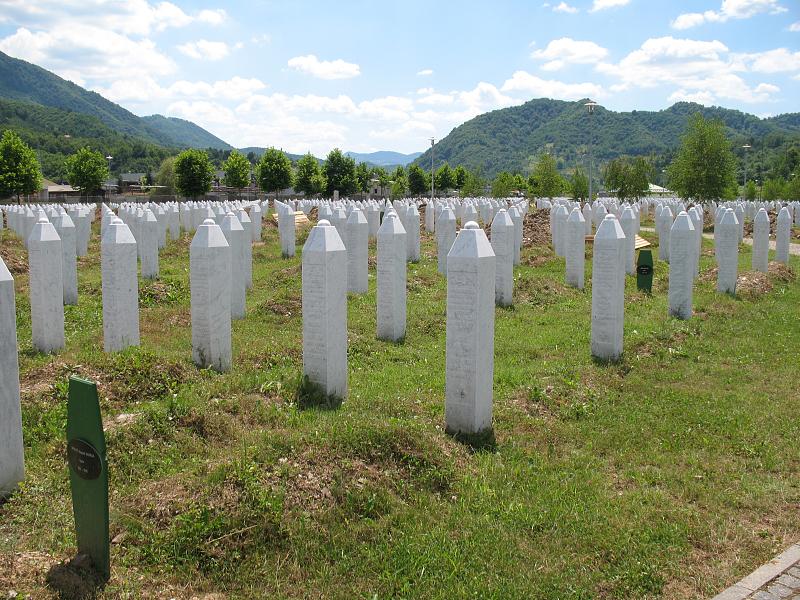(W)Archives: When “Safe Zones” Fail

The New York Times has reported that the United States, Turkey, and the Syrian opposition are planning to create a “safe zone,” free of the Islamic State of Iraq and the Levant (ISIL), for Syrians in an approximately 60-mile-wide strip of land along the Turkish-Syrian border. Certainly the long-suffering people of Syria deserve a place in which to be safe from ISIL and a safe zone might someday provide a convenient launching pad for a broader offensive against the group. However, a safe area comes with real commitments and serious dangers.
Nothing illustrates this better than the case of a modest Muslim town in Bosnia: Srebrenica, probably the most famous “safe zone” in modern military history. Documents posted by the invaluable National Security Archive set up the story. In April 1993, as the war in Bosnia was heating up, the United Nations Protection Force (UNPROFOR) in the former Yugoslavia was pressured into overseeing “An Agreement for the Demilitarization of Srebrenica,” between the Bosnian Serb and Bosnian Muslim armies and declaring the town a safe zone.
A cable a few days later from Kofi Annan, at that time the head of the UN Department for Peacekeeping Operations, to Swedish Lt. Gen. Lars-Eric Wahlgren, commander of UNPROFOR, discussed the implications of what had been agreed. Annan noted that the demilitarization “was a step agreed to by the [Bosnian Serbs and Bosnian Muslims], not one proposed by the United Nations.” However, “in order to save lives,” UNPROFOR would help the two sides implement the agreement by deploying a small peacekeeping force into the town and by “receiving weapons from the defenders of Srebrenica for the purpose of demonstrating to the attackers that they have no reason to attack.”
Presciently, Annan also wrote that “in doing so … UNPROFOR takes on a moral responsibility for the safety of the disarmed that it clearly does not have the military resources to honour beyond a point.” He further specified that the peacekeepers would retain the right of self-defense and would also be allowed to use force “if armed elements attempted by force to intrude into the demilitarized area.” However, he went on, “we understand … that 145 peacekeepers cannot be expected to resist a full-scale invasion by the Bosnian Serb Army; and that should heavy artillery shelling occur, UNPROFOR will take shelter like everyone else.” Unfortunately, Annan noted, some UNPROFOR officials had been making “brave declarations of UNPROFOR’s willingness to resist attacks on Srebrenica.” Pathetically, Annan suggested that Wahlgren ensure that UNPROFOR did not “participate too actively in ‘disarming the victims.’”
As Annan feared, in declaring this “safe area,” the United Nations had written a check that it could not cash. In July 1995, the bill finally came due when the Bosnian Serb army moved on the town. As David Rohde recounts in his masterful and immensely depressing book Endgame, it overawed and bamboozled a Dutch peacekeeping battalion and massacred some 7,000–8,000 Bosnian Muslim men and boys from the town. It was the worst atrocity in Europe since the end of World War II. The massacre became an enduring national humiliation for the Netherlands, destroyed the last shreds of the United Nations’ already tattered credibility in the former Yugoslavia, helped drag the United States into the conflict, and prompted NATO to take over and launch an offensive with U.S. participation, which led to the Dayton Accords of November 1995 that ended the war.
Now, no historical analogies are perfect and many are pernicious, and there are some obvious differences between Srebrenica and the “safe area” along the Turkish-Syrian border. For instance, the new safe area will decidedly not be demilitarized and ISIL, of course, will give no misleading promises to stay out of it. Moreover, the UN command and control structure was a continuing problem for effective peacekeeping and peace enforcement operations in Bosnia. Surely, the United States, Turkey, and Syrian opposition forces will work more smoothly together.
On the other hand, there is one obvious potential similarity: the very questionable level of commitment to securing the area. When the crisis came, the United Nations was not willing or able to actually defend Srebrenica and the Bosnian Muslims inside the town were not strong enough to do so themselves. Might this be a problem in Syria? It is instructive to look at what, according to the New York Times, each party is bringing to the table. Turkey will provide artillery support from its side of the border, the United States will provide air support from above, and the Syrian opposition will provide the troops who will do the tough work on the ground of actually driving ISIL out of this area. However, the article also reports that there may be a shortage of Syrian opposition fighters to actually defend the safe area on the ground.
What happens, then, months or years from now when ISIL launches an offensive against the safe area? Will Turkish and American ground forces come to the rescue of the safe area and the civilians who will surely flock to it? Hopefully, Turkish and American decision-makers will be willing to send the cavalry. If not, those two countries will be discredited every bit as much as the United Nations was and will have to deal with the guilt felt by the Netherlands in the wake of the Srebrenica massacre.
Mark Stout is a Senior Editor at War on the Rocks. He is the Director of the MA Program in Global Security Studies and the Graduate Certificate Program in Intelligence at Johns Hopkins University’s School of Arts and Sciences in Washington, D.C.
Photo credit: Martijn.Munneke

